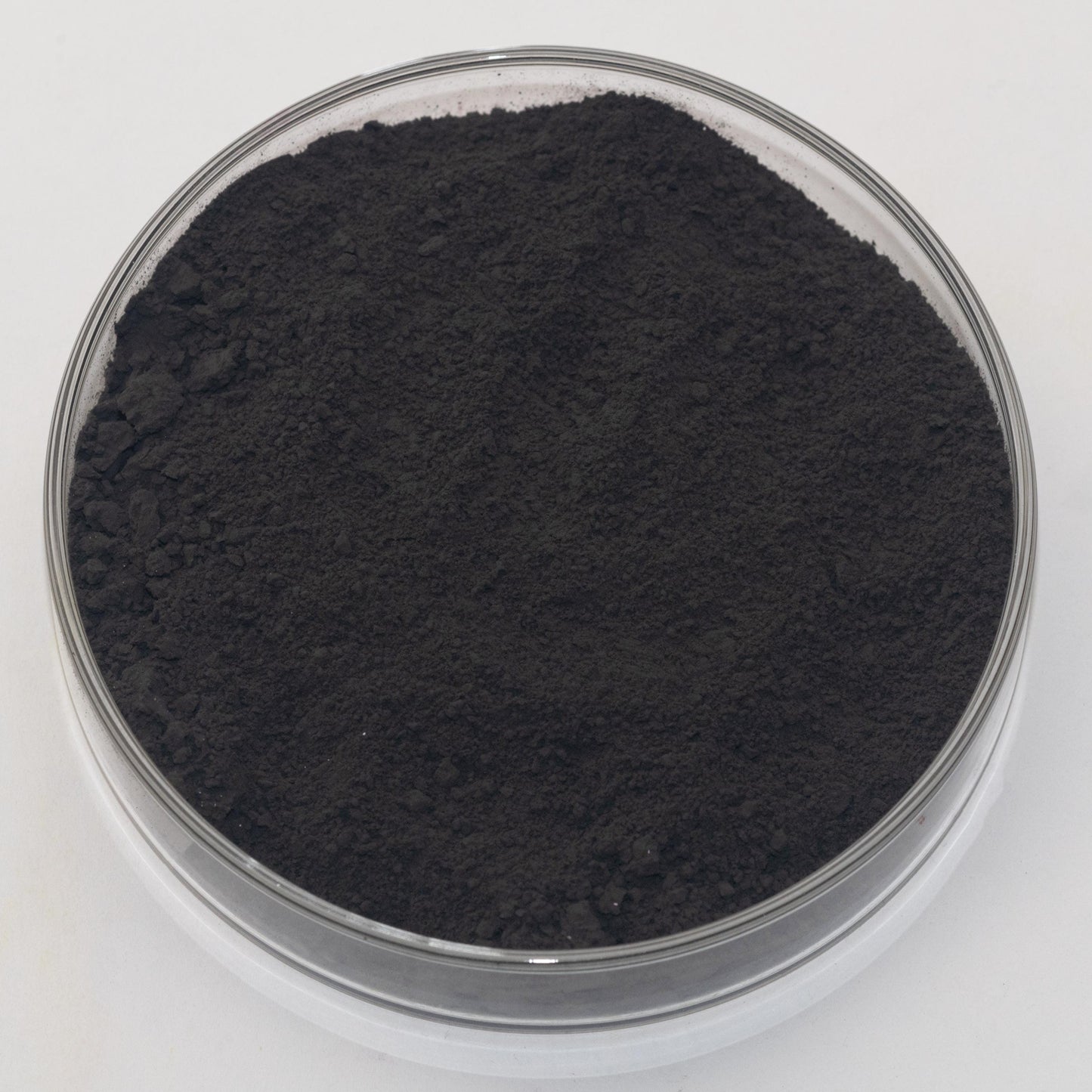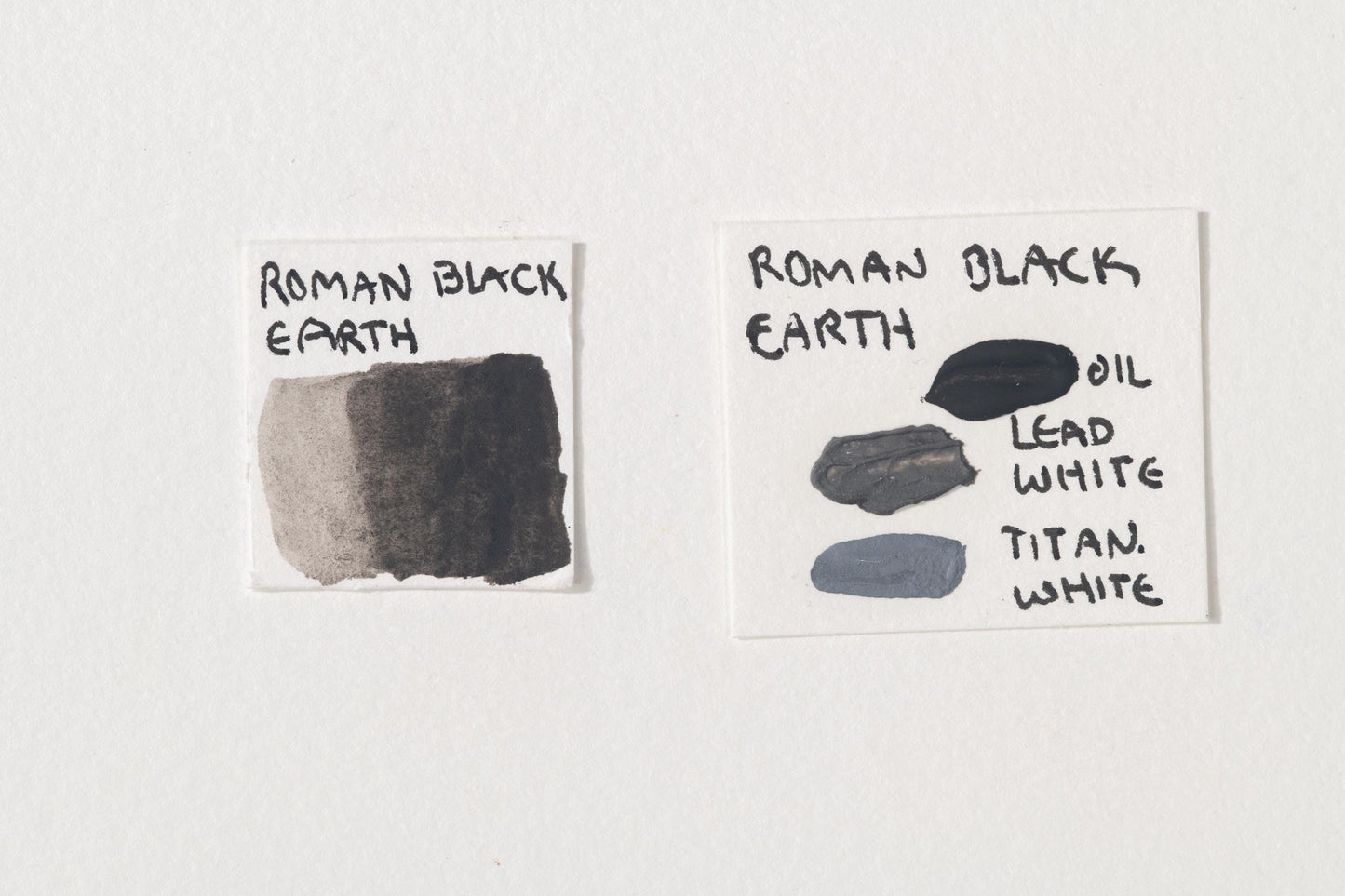Roman Black Earth
Roman Black Earth
Couldn't load pickup availability
Share



Description
Roman Black is a natural, handmade single pigment made through a ancient historical process of grinding raw earth from earthy lignite deposits in Verona, Italy. This pigment is extracted, dried, and finely ground to create a deep, warm black with subtle brown undertones. Unlike synthetic blacks, Roman Black retains the organic complexity and richness of its natural source, making it ideal for historical and traditional painting techniques.
This pigment offers excellent covering power and great blending properties, making it particularly valuable in oil painting, tempera, and fresco work. It produces soft, warm blacks with a natural depth that enhances shadows and underpainting techniques. Its deep color allows for rich, nuanced layers when mixed with other pigments.
Compared to carbon blacks, which can appear harsh, Roman Black has a more organic tone, making it an excellent choice for artists seeking historically authentic and naturally sourced black pigments.
History
Black pigments derived from lignite and other natural carbon sources have been used in art since antiquity. Ancient Romans utilized earthy black pigments in frescoes, pottery, and architectural decoration, valuing their rich, subtle tones for shading and dramatic contrasts. The deposits near Verona, Italy, have supplied artists with natural black earth pigments for centuries, contributing to some of the most celebrated artworks in European history. In the pictured Wall paintings on black ground: from the imperial villa at Boscotrecase, Roman Black Earth is used for the ground on which the painting is painted to create the rich, deep contrast.
During the Renaissance, black earth pigments were widely used by artists such as Caravaggio and Rembrandt, who appreciated their ability to create depth and contrast in chiaroscuro techniques. The warm undertones of lignite black made it a staple in oil painting, particularly in portraiture and figure painting.
Today, Roman Black remains a highly sought-after pigment for artists looking to achieve historical authenticity and natural warmth in their work. It continues to be used in fine art, conservation, and restoration projects that aim to preserve the legacy of traditional black pigments.
Health and Safety
Precautions:
Keep out of reach of children and pets.
Do not consume.
Not for cosmetic or food usage.
Do not spray apply.
For further health information contact a poison control center.
Use care when handling dry pigments and avoid dust formation.
Use particular caution with fibrous, fine, or toxic pigments.
Do not eat, drink, or smoke near dry pigments. Avoid breathing in pigment dust and use a NIOSH-certified dust respirator with sufficient rating for dry pigment.
Wash hands immediately after use or handling.
If dust is likely, always wear protective clothing to keep out of eyes, lungs, off skin, and out of any contact as well as keep area ventilated.
This product may contain chemicals known by the State of California to cause cancer, birth defects, or reproductive harm.
Warnings and bottle information are abbreviated.
Pigment Information
Pigment Type: Natural (Mineral) from lignite (fossilized organic material) (Italy)
Suitable Mediums: Watercolor, Oil, Tempera, Acrylic
Lightfastness: Best
Opacity: Semi-opaque
Other Names: Verona Black, Lignite Black, Earth Black
Color Index Code: PBk8
Image: Wall paintings on black ground by Unknown from the imperial villa at Boscotrecase (MET)



